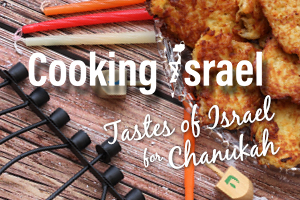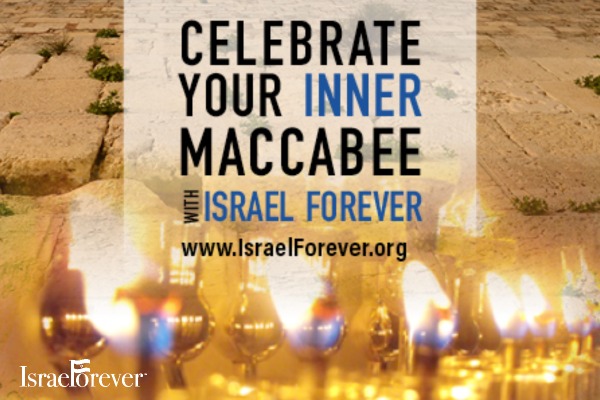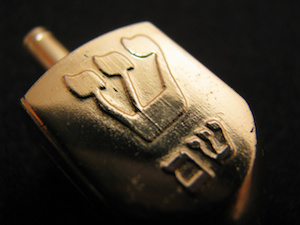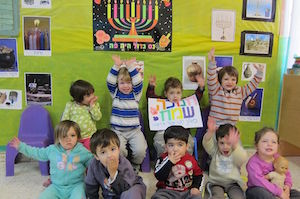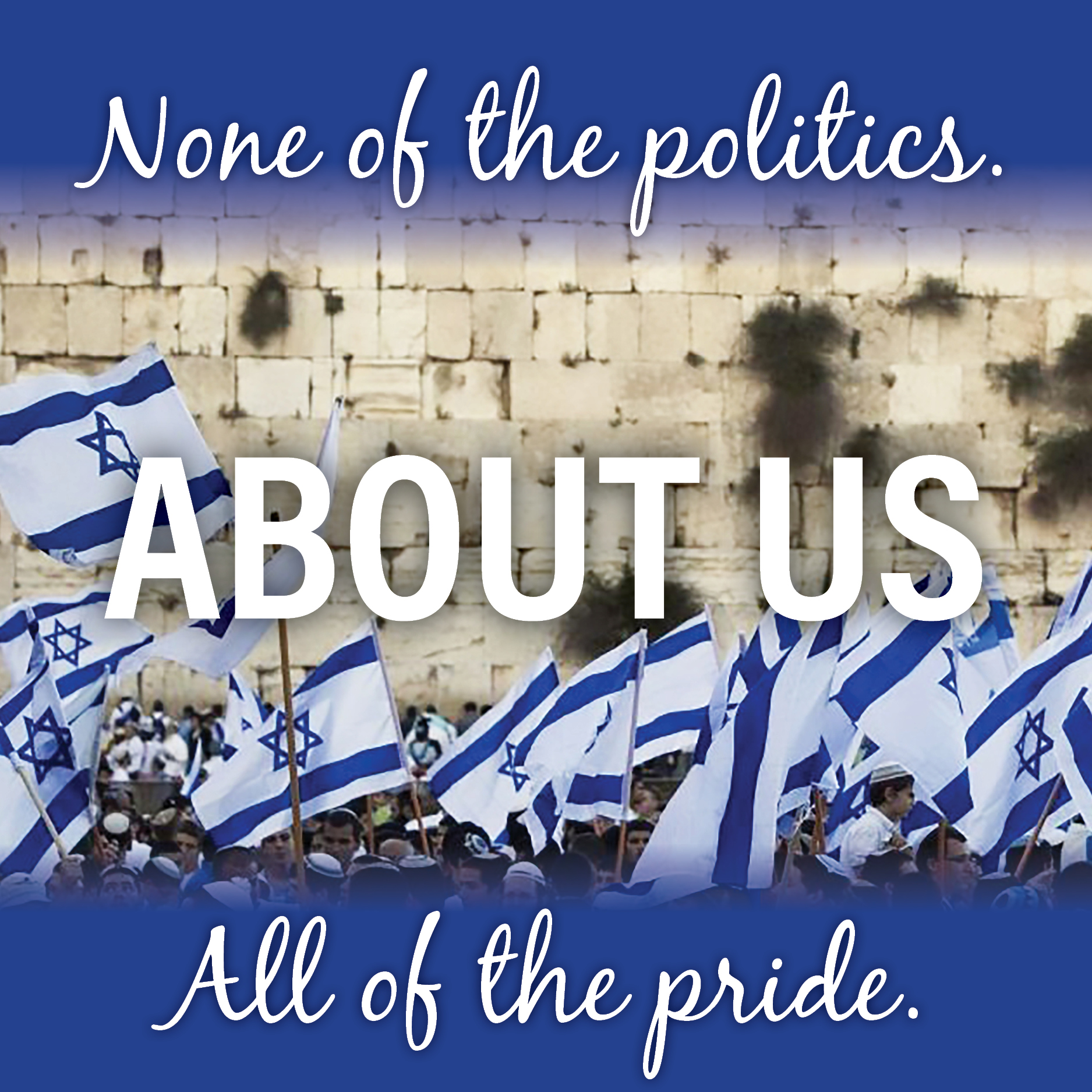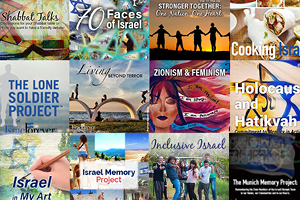Things You Didn't Know About Chanukah
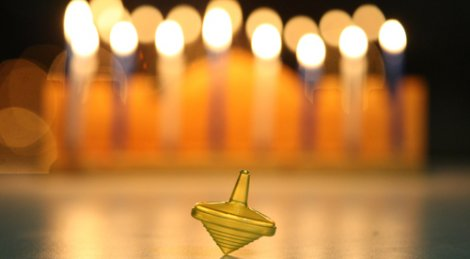
By Tamara Weston, TIME
Chanukah in Israel
Jews around the world light Chanukah menorahs during Chanukah, but in Israel the festival's flame takes an interesting path. Embracing a custom long associated with the Olympics, runners race a burning torch from the Israeli city of Modiin to Jerusalem, a distance of about 20 miles (32 km), where the chief rabbi lights a giant menorah at the Western Wall. The practice is now duplicated in other Jewish communities around the world.
The Real Chanukah Miracle
Chanukah commemorates the 165 B.C. victory of the Maccabees, a Jewish rebel army, over the Syrians and the subsequent re-dedication of the holy temple in Jerusalem. The Maccabees found enough consecrated oil inside the temple to light its eternal flame for a single day, but miraculously the lamp burned for eight. This is not only why Chanukah is an eight-day holiday, but also why there is always talk of a Chanukah miracle. The problem is, the real miracle here is that the oil burned for seven more days than it was expected to, not that it burned for a total of eight. After all, if the oil was supposed to last one night, it was only miraculous for seven.
The Chanukah Menorah
Lighting a special, nine-branched candelabrum is the main ritual on Chanukah. Most people — including Jews — incorrectly refer to this as a menorah, when in fact the correct name for the candle holder is Chanukiah or Chanukah menorah. A menorah, which has only seven candle holders, was the lamp used in the ancient holy temple in Jerusalem — now a symbol of Judaism and an emblem of Israel. A Hanukkiah, however, has nine candlesticks — one for each night of Chanukah and an extra one to light the others.
According to strict Jewish law, a Hanukkiah should have eight candleholders of the same height and a ninth branch that is set higher than the rest. Olive oil was traditionally used to light the Hannukiah, later replaced by candles that are inserted incrementally each night from right to left, but lit from left to right. Since 1998, the world's largest Hanukkiah — a 32-ft.-high, gold-colored steel structure — can be found during the Festival of Lights in New York City's Central Park.
Chanukah or Hanukkah?
There's only one way to spell Chanukah. Unfortunately, it's in Hebrew. When translated to English, the word becomes trickier to express. There's actually no way to spell the guttural "hecht" sound used in the traditional Hebrew pronunciation; Ch and H are the closest we can get. And then there's the issue with the double k's, seemingly added to give the final syllable a little more oomph. The phrase can be spelled Hanukkah, Chanukah, Chanukkah or Hanukah. Or you could go the easy route and look it up.
Dreidel, Dreidel, Dreidel
The dreidel — a four-sided spinning top — has different Hebrew letters on each side: nun, gimel, hay and shin. In Hebrew, the letters form the initials of the message, "A great miracle happened there" (referring Chanukah's everlasting oil). To play the dreidel game, players start out with the same amount of money (or candy) and they lose or gain depending on which letter turns up when they spin the top.
The Gift of Gelt
The gift of small Jewish coins first emerged as a Chanukah tradition during the Middle Ages, when gelt (a Yiddish word for money) was given to teachers. The practice gradually extended to children as well, who were expected to donate some of it to charity. (Gelt also became the reward for winning dreidel games.)
In 1958 Israel's national bank began minting commemorative coins to use as gelt, highlighting a different regional Jewish community each year (in honor of America's bicentennial in 1976, the coins featured a colonial American menorah). Some gelt is also distributed in the form of chocolate, believed to be one of the origins of the popular tinfoil-wrapped chocolate coins.
Why Fried Means Festive
The most popular way to prepare Chanukah dishes is to fry them in oil — an homage to the miracle that inspired the annual celebration. The holiday's culinary mainstays are potato pancakes (latkes) served with applesauce and sour cream, and jelly doughnuts known as sufganiyot. But regional differences have introduced a variety of deliciously fried foods: Jews in Greece eat deep-fried dough soaked in honey, known as loukoumades; Russian revelers cook buckwheat flapjacks; and in Spain the observant fry up fritters called bunuelos in schmaltz (goose fat).
One enterprising company in Israel has even created a doughnut injected with vodka that contains as much alcohol as a glass of beer.
The Mystery of Chanukah
For a holiday that's so popular, Chanukah gets little publicity in ancient Jewish literature. Unlike all other major Jewish holidays, Chanukah is not mentioned in the Old Testament. This is because the events leading up to the holiday took place after the Hebrew Bible was compiled. The story can be found in Books 1 and 2 of Maccabees, but these are not considered part of the canon. Even the discussion of Chanukah in the Talmud, the rabbinic commentary on the Hebrew Bible, begins by asking, "What is Chanukah?"
Click here to be directed to the original article.

